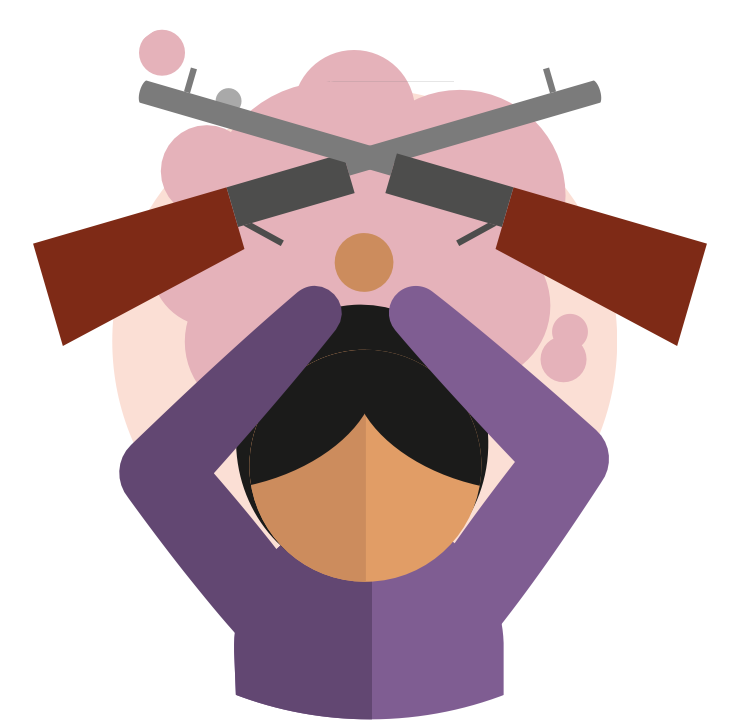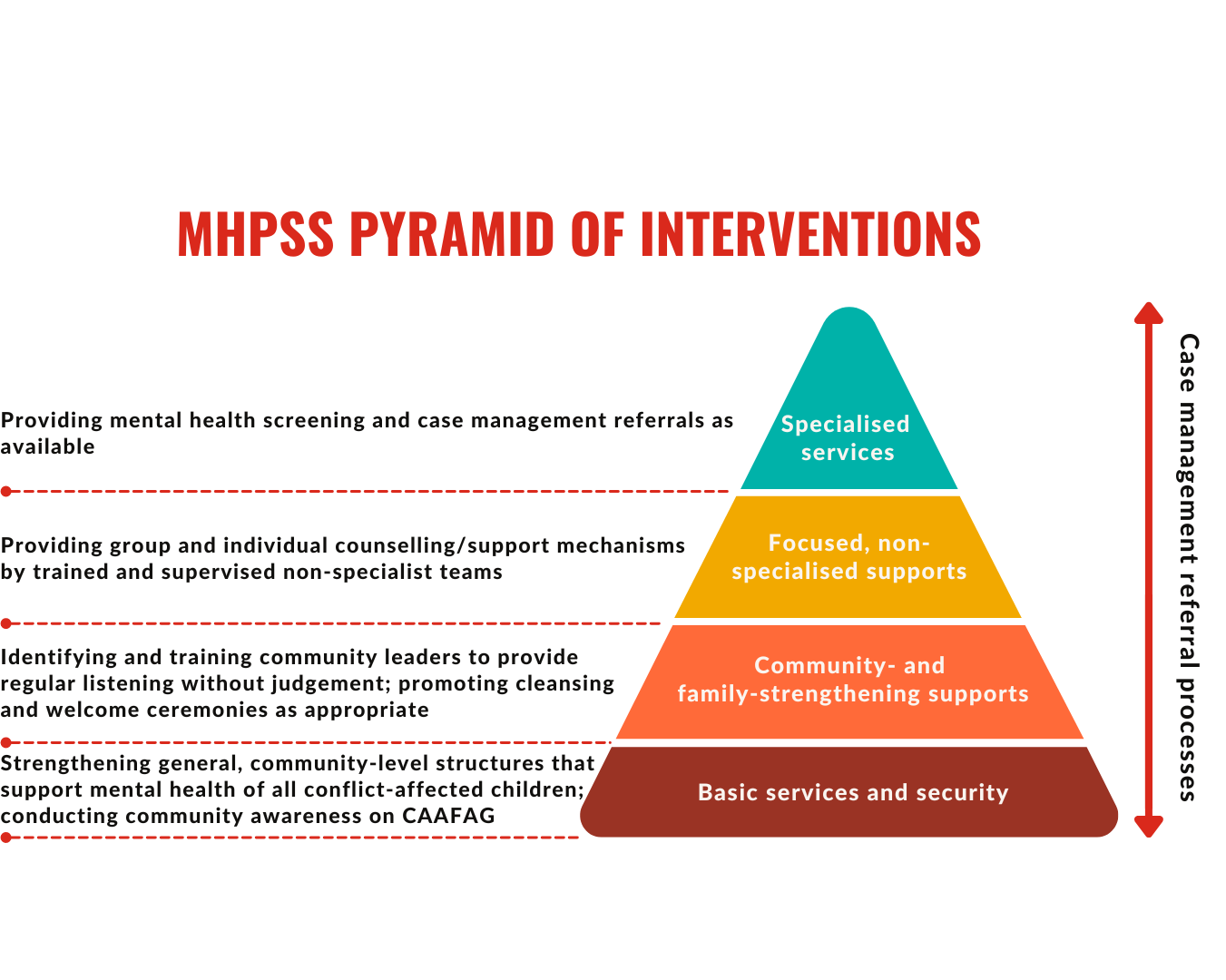Children Affected by Armed Forces and Armed Groups (CAAFAG)
MHPSS recommendations for cross-sectoral themes
While associated with armed forces or armed groups, children are at great risk of potentially traumatic events as a direct target, perpetrator, and/or witness to physical, psychological, and sexual violence and atrocities.1
Read the summary below or access the full guidance.
1. UNICEF and The Alliance for Child Protection in Humanitarian Action. 2020. Guidance on CAAFAG in COVID-19: Key Messages and Considerations for Programming for Children Associated with Armed Forces or Armed Groups During the COVID-19 Pandemic, v.1.

“Children associated with armed forces and armed groups (CAAFAG)” refers to children who are recruited and used by armed forces or armed groups for a wide range of purposes and roles, including non-combat roles. While associated with armed forces or armed groups, children are at great risk of experiencing, perpetrating and/or witnessing physical, psychological, and sexual violence and atrocities.[i] Upon reconnecting with communities, children and their families face a disproportionately high level of daily stressors including stigma, discrimination and socioeconomic adversity.[ii]
The positive mental health and well-being of caregivers and children are key protective factors that reduce vulnerability to recruitment. Similarly, children’s individual and collective agency in shaping their own well-being, coping and resilience supports their successful disengagement from armed forces and armed groups and reintegration into civil society.[iii] Integrated interventions should therefore address themes dealing with emotions, relationships with peers and adults, conflict and peace, personal identity, and a sense of belonging to their community.

[i] UNICEF (2020) Guidance on CAAFAG in COVID-19
[ii] Tonheim, 2017
[iii] Hart, 2006; Medeiros, 2012; Shepler, 2014
Key Resources:
- UNICEF Technical Note on Girls Associated with Armed Forces and Armed Groups
- UNICEF and MHPSS Collaborative CAAFAG and MHPSS toolkit (still under validation – upcoming 2022) 1/Contextualization guidance; 2/program operational guidance, 3/advocacy brief 4/evidence review
- The Alliance for Child Protection in Humanitarian Action, Minimum Standards for Child Protection in Humanitarian Action (see standards on MHPSS and CAAFAG), 2019
